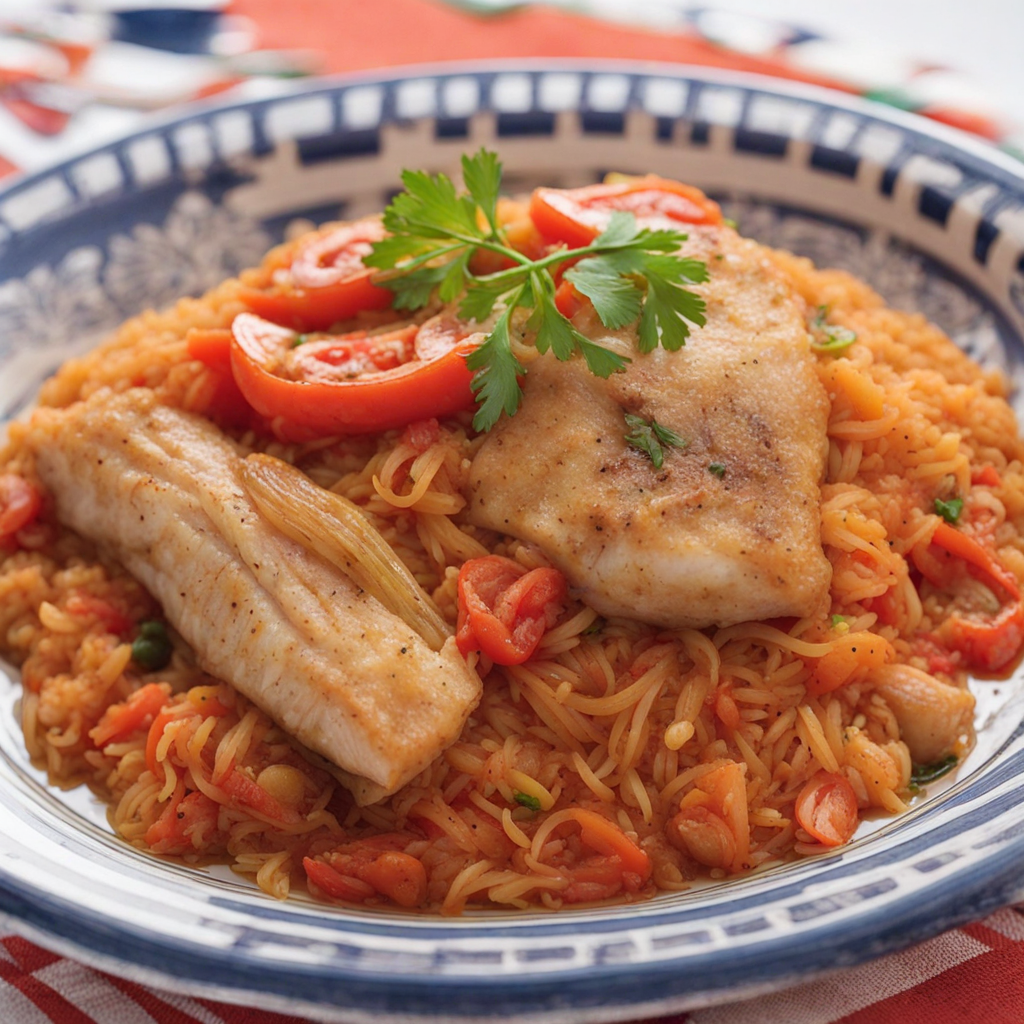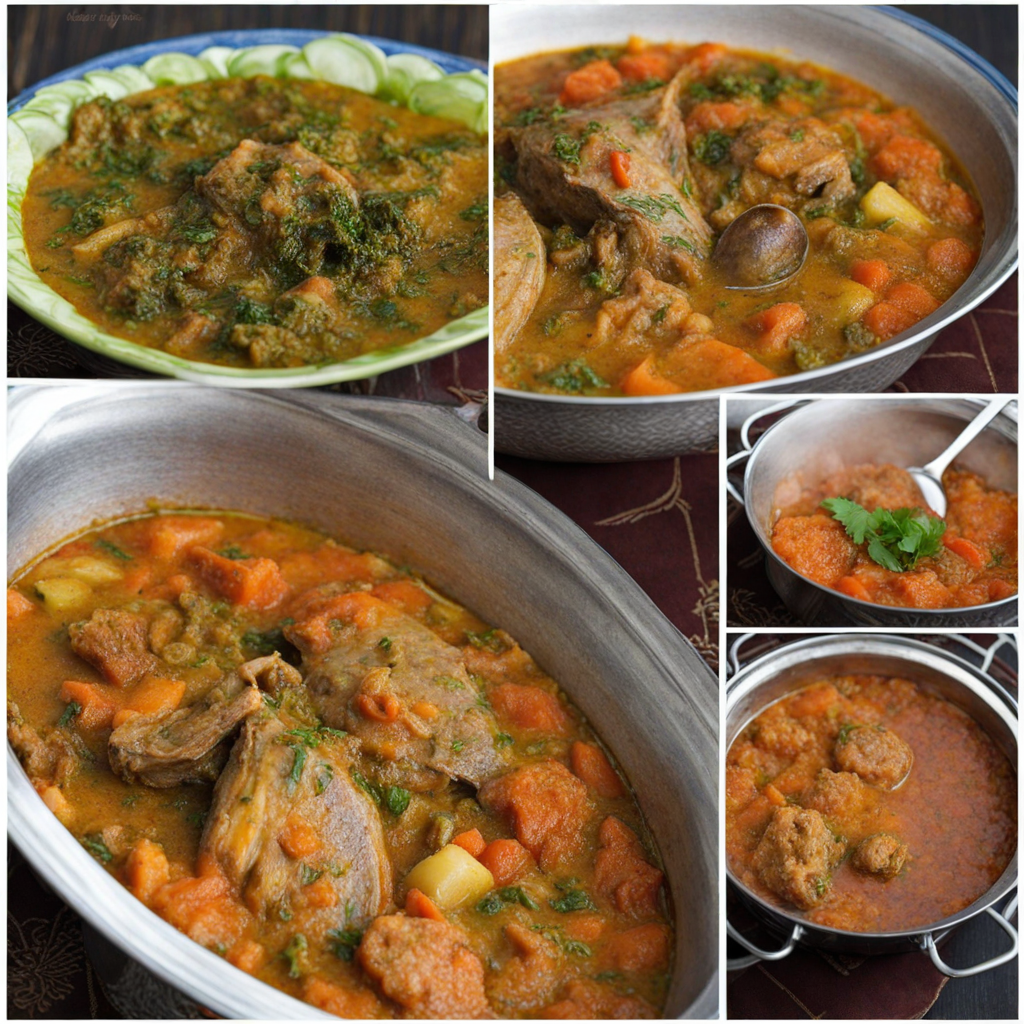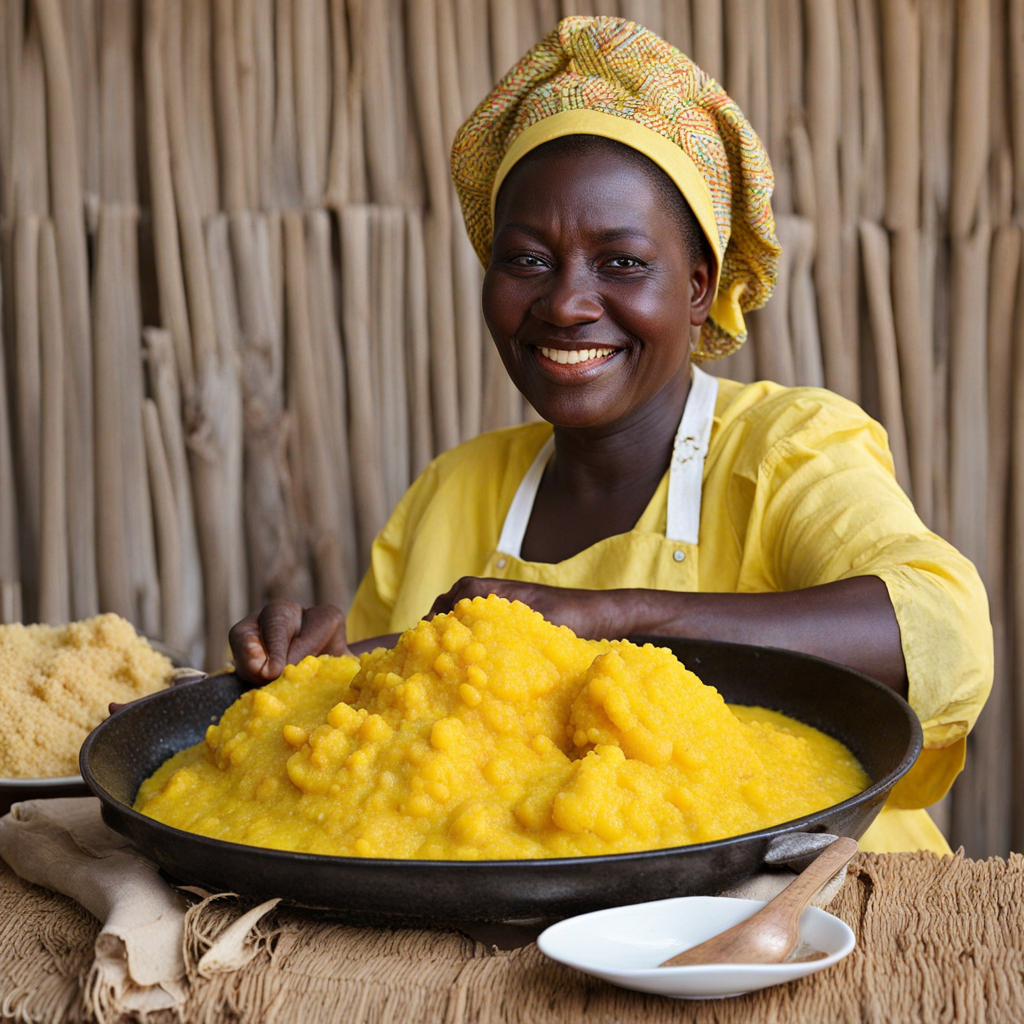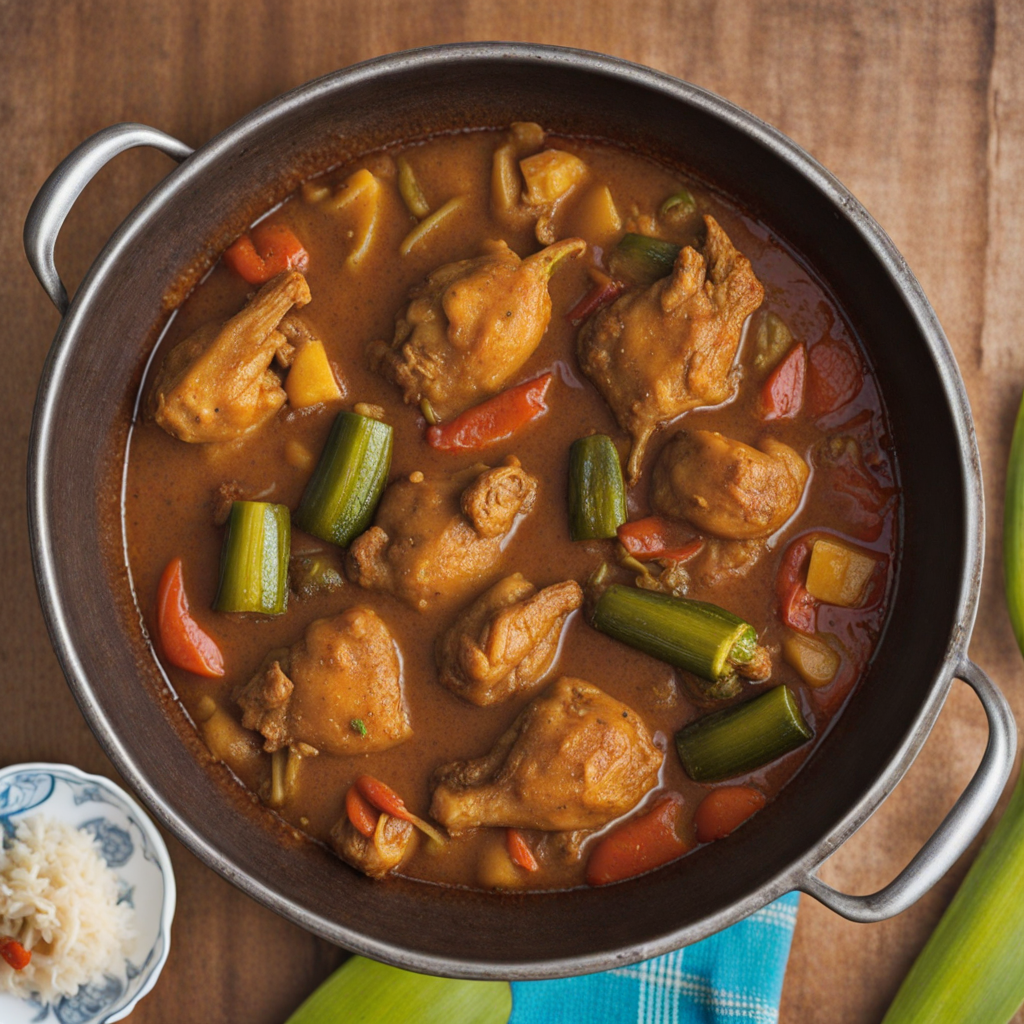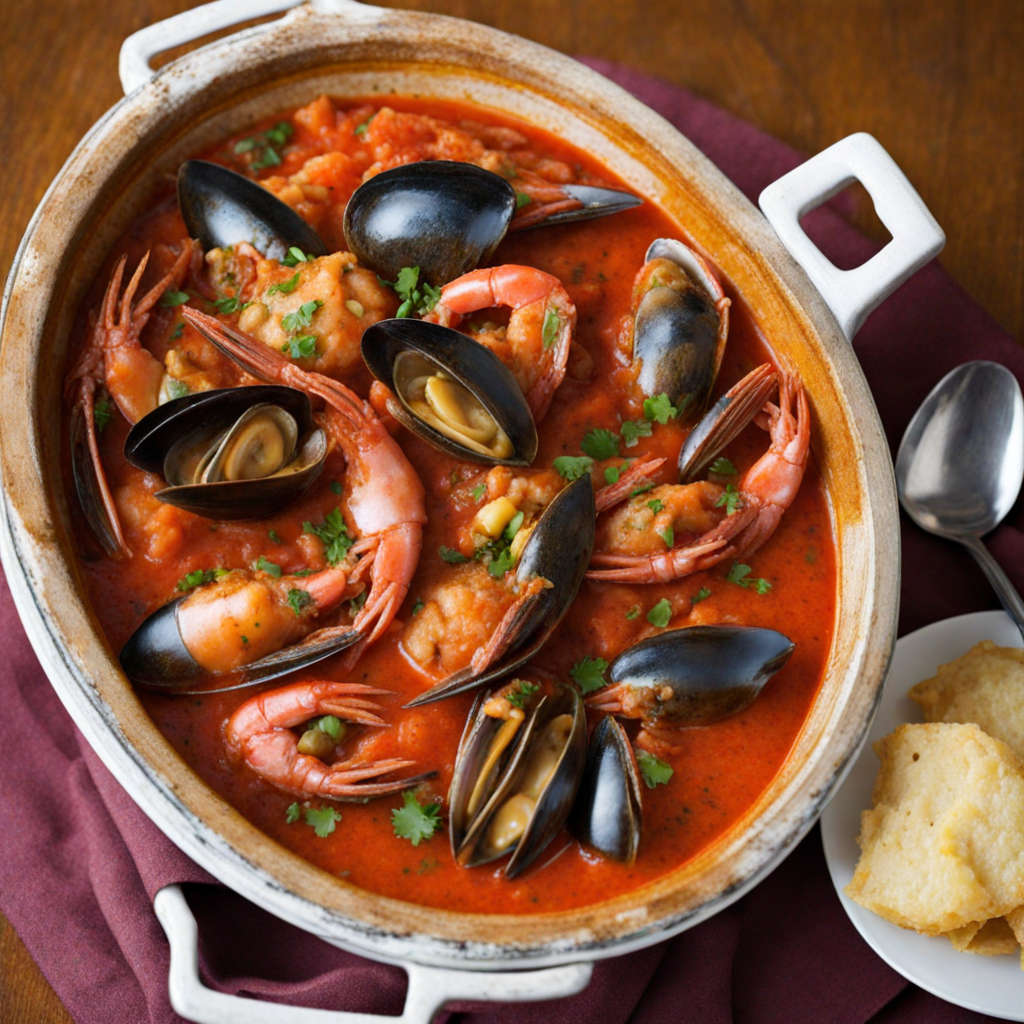Arroz de Garoupa
Arroz de Garoupa is a delightful Angolan dish that showcases the rich culinary traditions of the country. At its core, the dish features garoupa, a type of local fish known for its tender, flaky texture and mildly sweet flavor, which is expertly cooked to highlight its natural taste. The fish is typically marinated with a blend of spices, including garlic, onion, and sometimes a touch of chili, to infuse it with a deeper flavor profile that complements its freshness. This marination process is crucial as it sets the stage for a harmonious balance of flavors in the final dish. Accompanying the garoupa is a vibrant rice component, which is cooked to perfection, allowing it to absorb the flavors of the fish and spices. The rice is often prepared in a savory broth, enriched with tomatoes, bell peppers, and other locally sourced vegetables that add both color and nutrition. This combination not only enhances the dish's visual appeal but also provides a satisfying and hearty base that elevates the overall dining experience. To serve, Arroz de Garoupa is typically garnished with fresh herbs, such as cilantro or parsley, which add a pop of freshness and a burst of color. The dish is often enjoyed with a squeeze of lemon or lime, which brightens the flavors and adds a refreshing tang. Each bite is a celebration of Angolan flavors, making Arroz de Garoupa a must-try for anyone looking to explore the diverse and delicious world of Angolan cuisine.
How It Became This Dish
The History of Arroz de Garoupa: A Culinary Jewel of Angola Arroz de Garoupa, a beloved dish from Angola, embodies the rich tapestry of the nation's culinary heritage. This dish, consisting of rice accompanied by grouper fish, is not just a meal but a reflection of Angola's history, culture, and the interplay of its diverse influences. To understand Arroz de Garoupa, one must delve into the origins of its key ingredients, the cultural significance of the dish, and its evolution through time. #### Origins of the Dish The roots of Arroz de Garoupa can be traced back to the coastal areas of Angola, where fishing has been a crucial aspect of life for centuries. The Angolan coastline, stretching for over 1,600 kilometers along the Atlantic Ocean, is rich in marine biodiversity, making fish an essential source of sustenance for local communities. Grouper, a prized fish due to its firm texture and mild flavor, became a staple in the diet of coastal Angolans. Rice, on the other hand, has a more complex history in Angola. While indigenous populations had their own agricultural practices, the introduction of rice to the region is largely attributed to Portuguese colonization in the 15th century. The Portuguese brought with them not only rice but also various cooking techniques and culinary traditions from their homeland. Consequently, rice became an integral part of Angolan cuisine, often served alongside an array of fish and seafood dishes. #### Cultural Significance Arroz de Garoupa is more than just a dish; it is a cultural emblem that reflects the identity of the Angolan people. The preparation and sharing of Arroz de Garoupa often take place during family gatherings, celebrations, and significant life events, such as weddings and festivals. The communal aspect of dining is deeply woven into Angolan culture, where meals serve as opportunities to bond, share stories, and celebrate heritage. The dish also highlights Angola's connection to the ocean. Fishermen and their families have relied on the sea for generations, and the preparation of Arroz de Garoupa honors this relationship. The dish showcases the skill of local fishers who brave the waters to catch fresh grouper, as well as the knowledge of home cooks who transform these ingredients into a flavorful meal. Moreover, Arroz de Garoupa is often seasoned with local spices and ingredients, reflecting the diverse flora and fauna of Angola. Ingredients such as tomatoes, onions, garlic, and peppers are commonly used, imparting vibrant flavors that characterize Angolan cuisine. This emphasis on fresh, local ingredients underlines the importance of sustainability and respect for the environment in Angolan food culture. #### Development Over Time The evolution of Arroz de Garoupa is a testament to Angola's dynamic culinary landscape, shaped by historical events, migration, and globalization. During the colonial period, the fusion of Portuguese cooking techniques with local ingredients laid the groundwork for many contemporary Angolan dishes. As rice became a staple, various methods of preparation emerged, with each region adding its own twist to the classic recipe. After Angola gained independence in 1975, the country experienced significant social and political changes that influenced its culinary traditions. The civil war that ensued caused widespread displacement and disrupted traditional food systems. However, the resilience of the Angolan people ensured that culinary practices adapted and endured. Arroz de Garoupa, with its emphasis on communal cooking and sharing, became a symbol of unity and resilience during challenging times. In contemporary Angola, Arroz de Garoupa has gained recognition beyond local borders. As the country rebuilt and redefined its identity, Angolan cuisine began to attract the attention of international food enthusiasts. The dish has been featured in culinary events, food festivals, and even restaurants that seek to celebrate African cuisine. This exposure has not only elevated Arroz de Garoupa's status but has also sparked interest in other traditional Angolan dishes. #### Modern Variations and Global Influence Today, Arroz de Garoupa can be found in various forms, reflecting the creativity and adaptability of Angolan cooks. While the classic version remains popular, culinary innovation has led to the incorporation of new ingredients and techniques. Some contemporary variations include the addition of coconut milk, which enhances the dish's creaminess and introduces a tropical flair. Others might introduce spices from different cultures, creating a fusion that tells the story of Angola’s global connections. The globalization of food culture has also meant that Angolan cuisine, including Arroz de Garoupa, is increasingly recognized and celebrated in international culinary circles. Chefs of Angolan descent have begun to reclaim their heritage, presenting traditional dishes with modern interpretations that appeal to diverse audiences. This culinary renaissance highlights the importance of preserving cultural identity while embracing change and innovation. #### Conclusion Arroz de Garoupa is a culinary symbol of Angola, steeped in history and cultural significance. Its origins reflect the interplay of indigenous practices and colonial influences, while its communal nature underscores the values of togetherness and resilience that characterize Angolan society. Through the years, Arroz de Garoupa has adapted and evolved, celebrating both tradition and modernity. As Angola continues to navigate the complexities of the 21st century, Arroz de Garoupa stands as a reminder of the nation’s rich culinary heritage—a dish that not only nourishes the body but also connects people to their history, culture, and one another. Whether enjoyed at a family gathering or tasted in a cosmopolitan restaurant, Arroz de Garoupa remains a cherished part of Angola’s gastronomic legacy, inviting all to partake in its flavorful journey through time.
You may like
Discover local flavors from Angola



